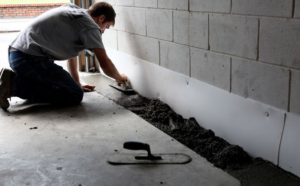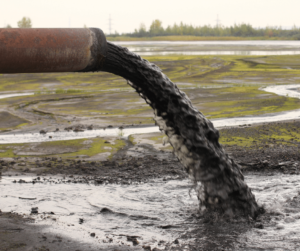If you’re planning a home renovation or new construction project, you need to hire an experienced general contractor. A GC can help you with every aspect of your project including the permit process and city inspections.
They’ll work with your architect on the design phase and oversee the physical construction of your project. They also take on a variety of other duties to ensure the success of your project. Contact General Contractors Tacoma WA now!

In construction, project management is key to ensuring that the work stays on schedule and within budget. The general contractor is responsible for all aspects of the build, including planning, procurement of materials, hiring and managing subcontractors, and coordinating with local authorities on permits. They also act as a liaison between the client and other stakeholders, and ensure that all parties communicate effectively.
A general contractor can be a person or a company, but a large firm typically handles projects of varying sizes and scopes. In addition to a general contracting service, many firms offer specific types of services such as foundation and excavation, demolition, or electrical. Some specialty contractors may be engaged directly by the owner.
While some of the work performed by a general contractor is highly technical, a large portion of it is not. In the initial planning phases, a GC prepares quantity and material takeoffs from blueprints and project specifications to create cost estimates. These include labor, equipment rental, office space, worker’s compensation, and insurance expenses.
Once the project plan is set, a GC solicits bids from various companies and negotiates with them to secure the contract. They may also serve as building designers and construction foreman (a tradesman in charge of a crew). While the role of a general contractor is to oversee all components of a project, they often delegate specific responsibilities to individual contractors and supervise them on-site.
General contractors can be a great asset to projects by offering their expertise in project management, but they may need additional support on some jobs. In these cases, a client might hire an independent construction manager to assist with the design and budgeting phases and provide oversight of all aspects of the project.
Supervision of general contractors is essential, but it’s not always possible to be on site every day. When working with a team of multiple contractors, effective supervision comes down to setting clear expectations and trusting that the general contractor will follow those guidelines. In the construction industry, micromanaging can lead to misunderstandings and tension on site that may negatively impact the quality of the finished product.
Licensing
GCs work on a variety of construction projects, including commercial, residential, and government/municipal projects. They also manage and coordinate with subcontractors who perform the specialized aspects of the project. In addition to managing the overall project, a GC is also responsible for procurement of materials and obtaining required permits. They also communicate with project owners and architects to ensure everyone is on the same page.
The licensing process varies by state, but in general, it requires passing an exam and having experience in the construction industry. Some states require a minimum number of years of experience, while others may mandate educational qualifications. Many GCs pursue a bachelor’s or master’s degree in construction management, building science, or surveying to enhance their earning potential and increase the number of jobs they can qualify for.
In addition to licensing, most states require GCs to have certain levels of insurance and bonding. This typically includes general liability and workers’ compensation insurance, which protects the GC against claims from clients or employees for property damage or injuries. Some states even require GCs to have a specific size bond for projects exceeding a certain value.
Once licensed, a GC can submit proposals for new work. These proposals typically include the scope of work, a cost estimate for labor and materials, and a timeline for completion. They can also negotiate a negotiated contract, which is ideal for project owners who want to avoid bidding wars and work with a GC they trust.
Licensing is essential for GCs to show that they are legitimate businesses and are following local guidelines for insurance, taxes, and safety. It also helps them build trust with property owners and other stakeholders in the construction industry. In addition, it helps GCs maintain their business operations and ensures they can continue working on projects without interruption.
Experience
A general contractor’s job requires a wide range of skills and knowledge. A GC must have a solid understanding of building methods, construction codes, and the ability to manage multiple aspects of a project simultaneously. They must also be able to meet deadlines and budget requirements.
Whether you’re building a new home, remodeling your kitchen or finishing up a bathroom project, hiring a licensed, professional general contractor is essential to the success of your project. The average GC will have many years of experience working on projects of all types and sizes. They will have the knowledge and expertise to handle all aspects of a construction project, including obtaining the correct permits; coordinating with tradespeople such as plumbers, electricians and painters; ordering materials; overseeing the worksite; and completing inspections.
In addition to their construction knowledge, a reputable GC will be able to communicate with you clearly and openly. They will be willing to answer questions and field suggestions from the client, as well as provide their own ideas about design, color and layout. Having a good rapport with your GC can help keep the project on track, on schedule and within your budget.
Another skill that a GC needs is excellent organizational skills. With several projects underway at once, a GC must be able to keep track of progress and manage expectations. They must also be able to resolve issues that arise during the construction process and ensure that all parties involved are happy with the results of the project.
A GC will take care of the budgeting and billing as well, making sure that all subcontractors are paid in a timely manner. They will also be able to give clients accurate financial statements throughout the course of the project.
There are many paths to becoming a GC, but most of them involve a combination of education and hands-on work experience. Typically, you will need at least a high school diploma and some post-secondary courses in subjects like construction management, blueprint reading, safety and building codes, and construction material and cost estimation. Some GCs may choose to acquire their skills through an apprenticeship with a licensed and reputable construction company.
Safety
A general contractor should build rigorous safety protocols into all construction processes to ensure everyone’s safety. This may include implementing site-specific protocols for hazardous materials, ensuring that all workers are trained in specific equipment and procedures, and establishing clear communication with team members to ensure compliance with all regulations.
Because construction sites are crowded with subcontractors, vendors and other workers, safety issues can arise quickly. General contractors should monitor the site daily to ensure that all employees are following proper protocol. They can also provide training to help all workers understand the importance of safety and why certain precautions are necessary for the project’s success.
GCs are responsible for a worksite’s overall safety, and often oversee all the subcontractors on the job. As such, they can be held liable for their subcontractors’ violations under OSHA’s multi-employer policy. However, several cases have found that a GC’s duty to exercise reasonable care is lessened because of their secondary role at the worksite, and the Occupational Safety and Health Review Commission has vacated citations issued to GCs for their subcontractors’ violations.
All equipment must be in working order and free of any hazardous conditions to prevent accidents on the worksite. General contractors should regularly inspect each piece of machinery to ensure that all safety features are functioning correctly. They should also create guidelines for the safe loading and unloading of equipment to reduce the risk of equipment rolling over, causing injuries to workers.
Many contractors offer comprehensive worker training programs to keep their teams up-to-date on all the latest safety protocols and procedures. In addition, they should regularly evaluate each worker to identify any gaps in knowledge and experience. They should then develop a plan for providing training to fill those gaps, and they should communicate this plan to the workers.
All GCs should be familiar with the facility’s written safety policies and procedures, and they should make them readily available to all workers. Additionally, a GC should designate a representative to communicate with contractors and coordinate with them on all health and safety matters. The designated representative should be thoroughly familiar with the contract document and know “who to call” for information on safety signals, emergency response numbers and other pertinent details.


